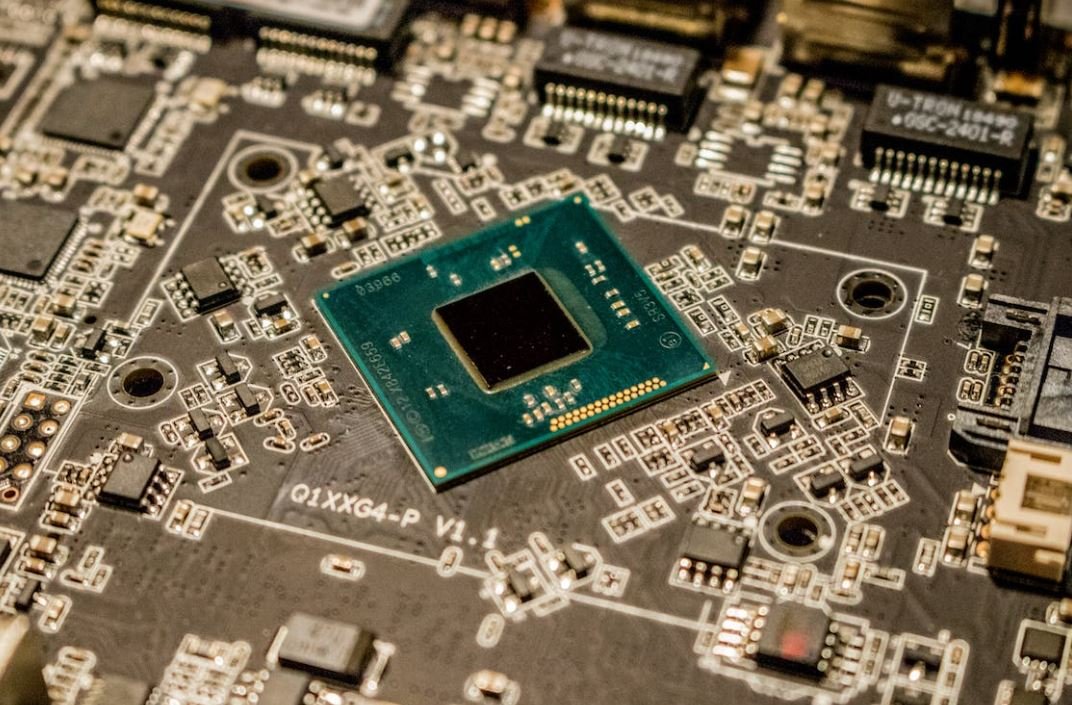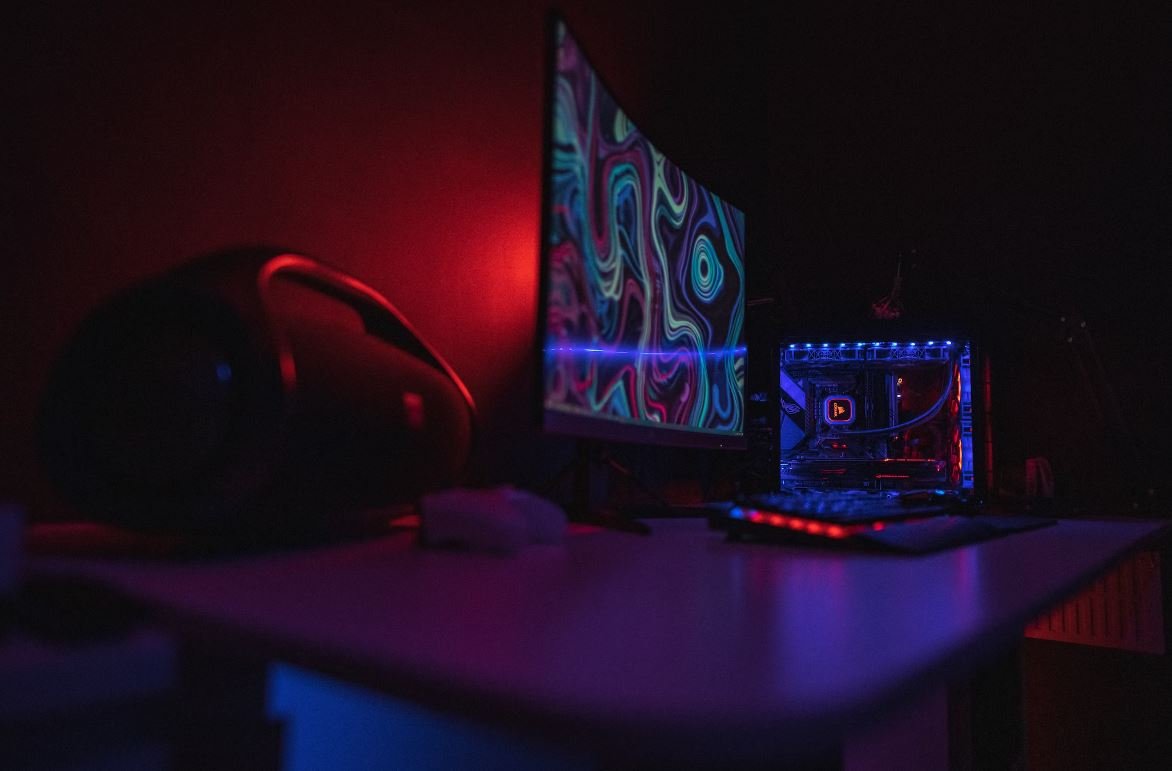Deepfake Voice: Unveiling the Power of Synthetic Speech
The rise of artificial intelligence (AI) has brought about numerous advancements, and one of the most intriguing developments is the creation of deepfake voice technology. Deepfake voice involves using AI algorithms and machine learning techniques to manipulate or synthesize speech in an incredibly realistic way, imitating the voice of a specific individual or generating entirely new voices.
Key Takeaways:
- Deepfake voice technology utilizes AI algorithms to create highly realistic synthetic speech.
- It can mimic the voice of a specific individual or generate entirely new voices.
- Deepfake voice has significant applications in entertainment, voice assistants, and accessibility.
Deepfake voice technology has quickly gained attention due to its potential applications in various fields. **It employs sophisticated machine learning models** that analyze vast amounts of audio data to capture the unique characteristics of a person’s voice. By learning the patterns, nuances, and pronunciation of an individual, the AI model can then generate new speech that sounds almost identical to the original speaker.
One interesting aspect of deepfake voice technology is its **potential to resurrect the voices** of historical figures or deceased loved ones. By analyzing existing audio recordings and interviews, AI can recreate these voices and allow us to hear them speak as if they were still alive.
Applications of Deepfake Voice Technology
The applications of deepfake voice technology are vast, with numerous industries benefiting from its capabilities:
- Entertainment industry: Deepfake voice technology can revolutionize filmmaking and voice acting, allowing actors to easily provide voiceovers for foreign language dubs or replicate the voices of deceased actors.
- Voice assistants: Virtual assistants, such as Siri or Alexa, can benefit from deepfake voice technology to deliver more natural and personalized interactions, making them even more user-friendly.
- Accessibility: Individuals who have lost their ability to speak due to illness or injury can benefit from deepfake voice technology, as it enables them to regain their voice and communicate more effectively.
Deepfake Voice Technology: Advantages and Concerns
As with any technology, deepfake voice has its advantages and concerns:
| Advantages | Concerns |
|---|---|
| Enhanced entertainment experiences | Potential for misuse, such as creating audio deepfakes for malicious purposes |
| Improved accessibility for individuals with speech impairments | Privacy concerns regarding voice manipulation and identity theft |
| Personalized virtual assistant experiences | Ethical questions around using deepfake voice technology without consent |
The advancements in deepfake voice technology are astounding, bringing both excitement and caution. Its potential to enhance entertainment, accessibility, and voice assistant experiences is vast, but the concerns surrounding its misuse, privacy, and ethics must be carefully addressed.
Current Limitations and Future Developments
While deepfake voice technology has come a long way, there are still limitations that need to be overcome for even greater advancements. Currently, it requires a significant amount of high-quality training data to produce convincing synthetic voices, limiting its scope and availability.
However, researchers are actively working on improving the technology. They are exploring ways to enhance voice synthesis models and reduce the amount of required training data. Future developments may lead to more accessible and widely applicable deepfake voice technology.
The Fascinating Journey Ahead
Deepfake voice technology has opened up a world of possibilities, making us rethink the boundaries of audio manipulation and human-machine interaction. As advancements continue to be made, the ethical, societal, and creative implications of this technology will undoubtedly shape our future.
So, brace yourself for a future where voices can be created, reproduced, and imitated with astonishing accuracy—a future where the power of synthetic speech has the potential to revolutionize the way we communicate. The journey ahead is truly fascinating.

Common Misconceptions
Misconception 1: Deepfake Voice Can Perfectly Replicate Any Voice
One common misconception about deepfake voice technology is that it can perfectly replicate anyone’s voice, making it indistinguishable from the original. However, this is not entirely true. While deepfake voice algorithms have become highly advanced, they still have limitations.
- Deepfake voice technology can produce convincing imitations of a person’s voice, but subtle nuances and emotional nuances may not be accurately replicated.
- Deepfake voice may struggle with replicating voices that have unique vocal characteristics or accents.
- Certain speech patterns or linguistic elements may be difficult for deepfake voice to reproduce accurately.
Misconception 2: Deepfake Voice Can Only Be Used for Malicious Purposes
Another common misconception is that deepfake voice technology is only used for malicious purposes, such as impersonating someone or spreading misinformation. While there have been cases of deepfake voice being used in unethical ways, the technology itself is not inherently malicious.
- Deepfake voice can be used in entertainment industries, such as dubbing or voice acting.
- Voice assistant technologies can benefit from deepfake voice, helping them provide more natural and personalized responses.
- Deepfake voice has potential applications in the accessibility field, helping people with speech disabilities communicate more comfortably.
Misconception 3: Deepfake Voice Can Be Easily Detected
Many people believe that it is easy to detect whether a voice is real or generated by deepfake technology. However, this is not always the case. Deepfake voice technology is constantly improving, making it increasingly challenging to differentiate between real and synthetic voices.
- Advanced deepfake voice algorithms can generate highly convincing imitations that fool human listeners.
- Traditional methods of voice analysis, such as spectrograms or pitch analysis, may not be consistently effective in detecting deepfake voices.
- Detecting deepfake voice often requires specialized tools and expertise in the field of voice forensics.
Misconception 4: Deepfake Voice Only Targets Individuals
While deepfake voice technology has been used to target individuals in some cases, it is not limited to this application. Deepfake voice has broader implications for various sectors of society.
- Deepfake voice technology can be used for creating realistic voiceovers for movies, advertising, or video game characters.
- Companies can leverage deepfake voice for personalizing customer experiences, such as voice-assisted customer service interactions.
- Media organizations can utilize deepfake voice to enhance their content by providing more engaging audio experiences.
Misconception 5: Deepfake Voice is Only a Novelty
Some people view deepfake voice technology as nothing more than a novelty, lacking meaningful applications. However, this misconception underestimates the potential of this technology in various fields.
- Deepfake voice can revolutionize the accessibility field, giving individuals with speech disabilities an alternative means of communication.
- Improving voice assistants with deepfake voice can enhance their functionality and make interactions with them feel more human-like.
- Musicians and audio professionals can explore creative possibilities using deepfake voice to generate unique vocal textures.

The Origins of Deepfake Technology
Deepfake technology has its roots in the field of artificial intelligence and machine learning. This table demonstrates the milestones in the development of deepfake technology over the years:
| Year | Development |
|---|---|
| 2014 | First appearance of deepfake technology |
| 2017 | Release of open-source deepfake software |
| 2018 | Deepfake technology gains attention in the media |
| 2019 | Deepfake technology becomes more accessible to the public |
| 2020 | Development of deepfake detection tools intensifies |
Uses of Deepfake Technology
The applications of deepfake technology are diverse, ranging from entertainment to political manipulation. The following table outlines some notable uses of deepfake technology:
| Domain | Use |
|---|---|
| Entertainment | Creating realistic face swaps in movies |
| Journalism | Enhancing storytelling through visuals |
| Political | Spreading disinformation and propaganda |
| Fraud | Impersonation for malicious purposes |
Deepfake Impact on Society
Deepfake technology has significant implications for society, leading to new challenges and concerns. The following table highlights some of the impacts:
| Impact | Description |
|---|---|
| Privacy | Increased risk of personal image misuse |
| Trust | Erosion of trust in visual and auditory evidence |
| Cybersecurity | New vulnerabilities in online communication |
| Manipulation | Ability to manipulate public opinion |
Real-Life Impact of Deepfake Technology
Deepfake technology has already had notable real-life consequences. The following table showcases some instances where deepfake technology was used for malicious purposes:
| Case | Description |
|---|---|
| Election Manipulation | Creation of fake videos to sway voter opinion |
| Identity Theft | Using deepfake technology to impersonate individuals |
| Cyberbullying | Spreading manipulated videos to harm individuals |
Deepfake Detection Techniques
To combat the rise of deepfake technology, researchers have developed various techniques for detecting manipulated content. This table outlines some common methods:
| Technique | Description |
|---|---|
| Analysis of Facial Movements | Identifying anomalies in facial expressions |
| Audio Analysis | Detecting inconsistencies in audio patterns |
| Artificial Intelligence | Using machine learning algorithms to spot deepfakes |
The Future of Deepfake Technology
As deepfake technology continues to advance, it presents both opportunities and challenges. This table presents some predictions for the future of deepfake technology:
| Prediction | Description |
|---|---|
| Expanding Use Cases | Deepfakes becoming more prevalent in various industries |
| Improved Realism | Enhancements in deepfake visual and auditory quality |
| Stricter Regulations | Introducing policies to mitigate deepfake risks and misuse |
The Ethical Considerations of Deepfake Technology
Deepfake technology raises numerous ethical concerns. The following table presents some key considerations:
| Consideration | Description |
|---|---|
| Consent | Using someone’s likeness without permission |
| Misrepresentation | Impersonating individuals or altering their statements |
| Harm to Reputation | Potential damage caused by manipulated content |
The Importance of Deepfake Awareness and Education
In order to mitigate the negative impact of deepfake technology, it is crucial to raise awareness and promote education. By equipping individuals with knowledge about deepfake detection and responsible media consumption, the risks associated with deepfakes can be minimized.
Deepfake technology continues to evolve rapidly, causing mounting concerns and challenging our perception of reality. While it has the potential for positive applications, such as enhancing entertainment, it also poses serious threats to privacy, trust, and the manipulation of information. Efforts to develop effective deepfake detection techniques and regulate the misuse of the technology are vital. Ultimately, a society informed about the risks and implications of deepfakes is better prepared to navigate this new digital landscape.
Frequently Asked Questions
Deepfake Voice
Q: What is deepfake voice?
A: Deepfake voice refers to the use of artificial intelligence (AI) and machine learning techniques to convincingly manipulate or generate human speech that sounds natural but is actually synthesized.
Q: How does deepfake voice technology work?
A: Deepfake voice technology uses deep learning algorithms and neural networks to analyze and understand patterns in recorded speech. It then uses this knowledge to synthesize new speech that mimics the vocal characteristics of the target person.
Q: What are the potential applications of deepfake voice?
A: Deepfake voice technology can be utilized for various purposes, such as voice conversion for entertainment, improving text-to-speech systems, creating personalized voice assistants, and providing accessibility options for individuals with speech disabilities.
Q: What are the risks associated with deepfake voice?
A: One of the major risks of deepfake voice is the potential for misuse and deception. It can be used to create false evidence, impersonate individuals, or spread misinformation through forged audio recordings. This can have serious consequences for personal, legal, and societal contexts.
Q: How can deepfake voice applications be detected?
A: Detecting deepfake voice applications can be challenging as the technology improves. However, researchers and technologists are continually developing detection methods based on analyzing inconsistencies in speech patterns, identifying artifacts or disturbances in the audio signals, and employing advanced techniques like voice biometrics.
Q: Are there any regulations or laws regarding deepfake voice technology?
A: Currently, regulations specifically targeting deepfake voice technology may be limited. However, existing laws related to privacy, defamation, copyright infringement, and fraud can apply to the misuse of deepfake voice technology. Authorities and lawmakers are actively discussing the need for specific legislation to address the emerging challenges posed by deepfakes.
Q: How can individuals protect themselves from deepfake voice manipulation?
A: To protect against deepfake voice manipulation, it is advisable to be cautious when consuming audio content online, particularly from unfamiliar sources. Verifying the authenticity of audio recordings through multiple trusted sources and using secure communication channels are good practices to minimize the risk of falling victim to deepfake voice manipulation.
Q: What are the ethical considerations surrounding deepfake voice technology?
A: Ethical concerns surrounding deepfake voice technology include issues of consent, privacy, and the potential misuse of technology for harmful purposes. There is ongoing discourse about the responsible development and use of deepfake voice technology, emphasizing the importance of transparency, accountability, and respecting individual rights and autonomy.
Q: What are the future prospects of deepfake voice technology?
A: The future prospects of deepfake voice technology are vast. It has the potential to revolutionize voice assistants, improve language learning and speech therapy applications, enhance accessibility tools, and enable innovative forms of entertainment. However, the responsible development, regulation, and ethical use of the technology will play a crucial role in shaping its long-term impact.
Q: What precautions can organizations take to address deepfake voice threats?
A: Organizations can take several precautions to address deepfake voice threats. This includes implementing robust authentication and verification measures, educating employees about deepfake risks, adopting advanced detection systems, and monitoring for potential instances of deepfake voice manipulation. Collaboration with experts and researchers can also aid in staying updated on emerging countermeasures.




